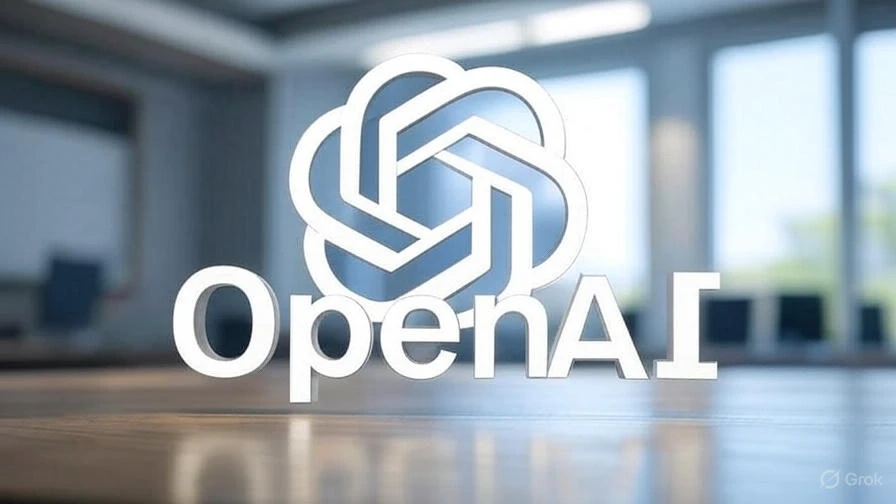OpenAI has recently made a significant announcement, releasing two new open-weight AI models, gpt-oss-120B and gpt-oss-20B. This marks a pivotal moment, as it’s the first time in six years that the company has made such models publicly available. This strategic shift was reportedly influenced by the success of DeepSeek’s cost-effective, open-weight R1 model, signaling a growing demand for more accessible and customizable AI solutions.
Table of Contents
What are Open-Weight AI Models and Why Do They Matter?
In the world of artificial intelligence, models typically fall into two categories: proprietary (closed-source) and open-source. Open-weight models are a subset of open-source AI where the model’s parameters (the “weights” learned during training) are made public. This allows developers to:
- Download and run the models locally: This means they can be deployed on personal devices like laptops, reducing reliance on cloud-based APIs and associated costs.
- Customize and fine-tune: Developers gain the freedom to modify the model’s architecture or fine-tune it for specific applications, fostering innovation and tailored solutions.
- Enhance transparency and research: Open access to weights promotes academic research and allows for greater scrutiny of AI models, potentially leading to improved safety and ethical considerations.
OpenAI’s decision to release gpt-oss-120B and gpt-oss-20B under an Apache 2.0 license further solidifies this commitment to openness, granting developers broad permissions to use, modify, and distribute the models.
Diving Deep into gpt-oss-120B and gpt-oss-20B
These new models are designed with efficiency and performance in mind:
- gpt-oss-120B: This is the larger model, featuring 117 billion parameters. Remarkably, it can run on a single 80GB GPU. Benchmarks indicate that it matches or even surpasses the performance of OpenAI’s o4-mini model across various tasks, including reasoning skills, problem-solving, and competition mathematics.
- gpt-oss-20B: A more lightweight alternative, this model has 21 billion parameters and can be deployed on devices with as little as 16GB of memory. Its performance is comparable to or better than the o3-mini model.
To achieve such efficiency, OpenAI employed advanced techniques like mixture-of-experts (MoE), which significantly reduces computation costs and energy consumption. They also utilized grouped multi-query attention to enhance inference and memory efficiency. Both models support an impressive maximum context window of 128,000 tokens, allowing them to process extensive amounts of text. The training data primarily consisted of English, text-only datasets with a strong emphasis on STEM, coding, and general knowledge.
OpenAI’s Commitment to Safety and Responsible AI
Recognizing the potential risks associated with powerful AI models, OpenAI has implemented several safety measures for gpt-oss-120B and gpt-oss-20B:
- Reinforcement Learning (RL) and Supervised Fine-Tuning: The models underwent rigorous RL and supervised fine-tuning cycles to ensure they refuse unsafe prompts and avoid generating harmful content, particularly concerning CBRN (Chemical, Biological, Radiological, Nuclear) topics.
- Adversarial Fine-Tuning: An additional round of safety testing involved adversarially fine-tuning a version of gpt-oss-120B to assess its potential for misuse. OpenAI claims these models did not exhibit a high risk for misuse.
- Red Teaming Challenge: In a proactive move, OpenAI has announced a $500,000 prize money for a “Red Teaming Challenge.” This initiative encourages the broader AI community to identify and report any further safety issues, demonstrating a collaborative approach to responsible AI development.
It’s worth noting that while these new open-weight models offer significant advantages, they do tend to “hallucinate” more than their larger, frontier counterparts. However, OpenAI’s transparent approach to safety and their efforts to mitigate risks are commendable.
The Future of AI Development
OpenAI’s release of gpt-oss-120B and gpt-oss-20B marks a pivotal moment in the AI landscape. By opening up access to these powerful models, OpenAI is not only responding to community demand but also fostering a more collaborative and innovative environment for AI development. This move could accelerate the creation of new applications, democratize AI research, and ultimately lead to more robust and beneficial AI systems for everyone.

